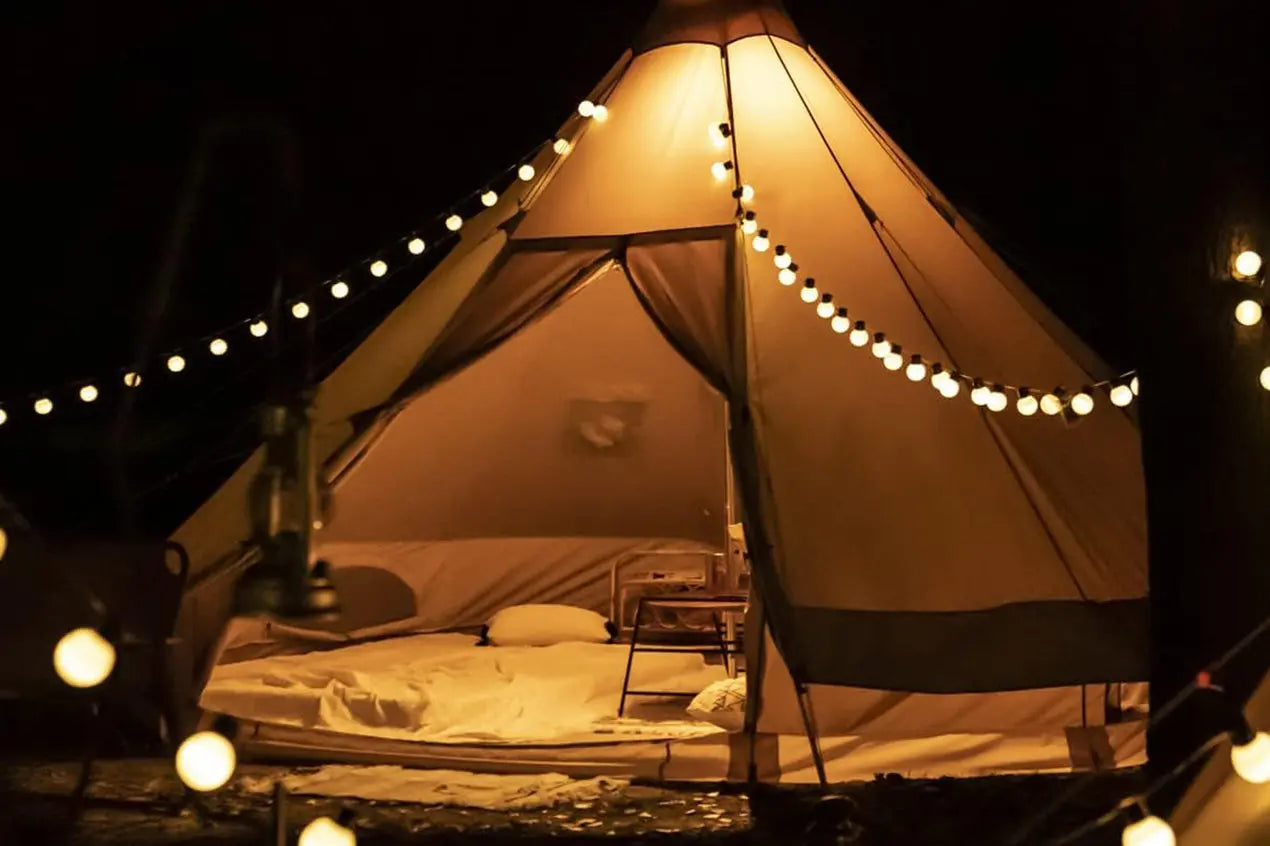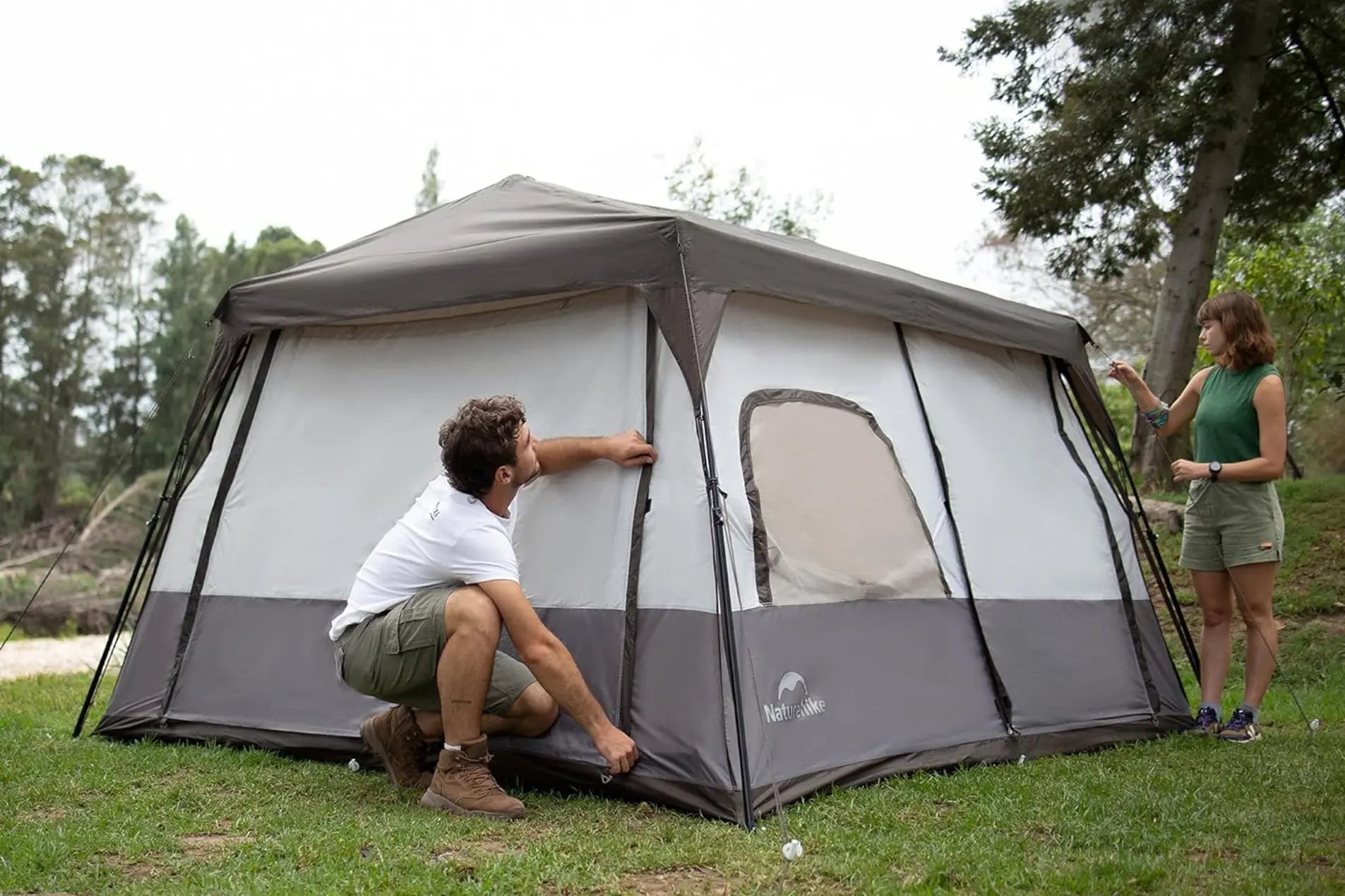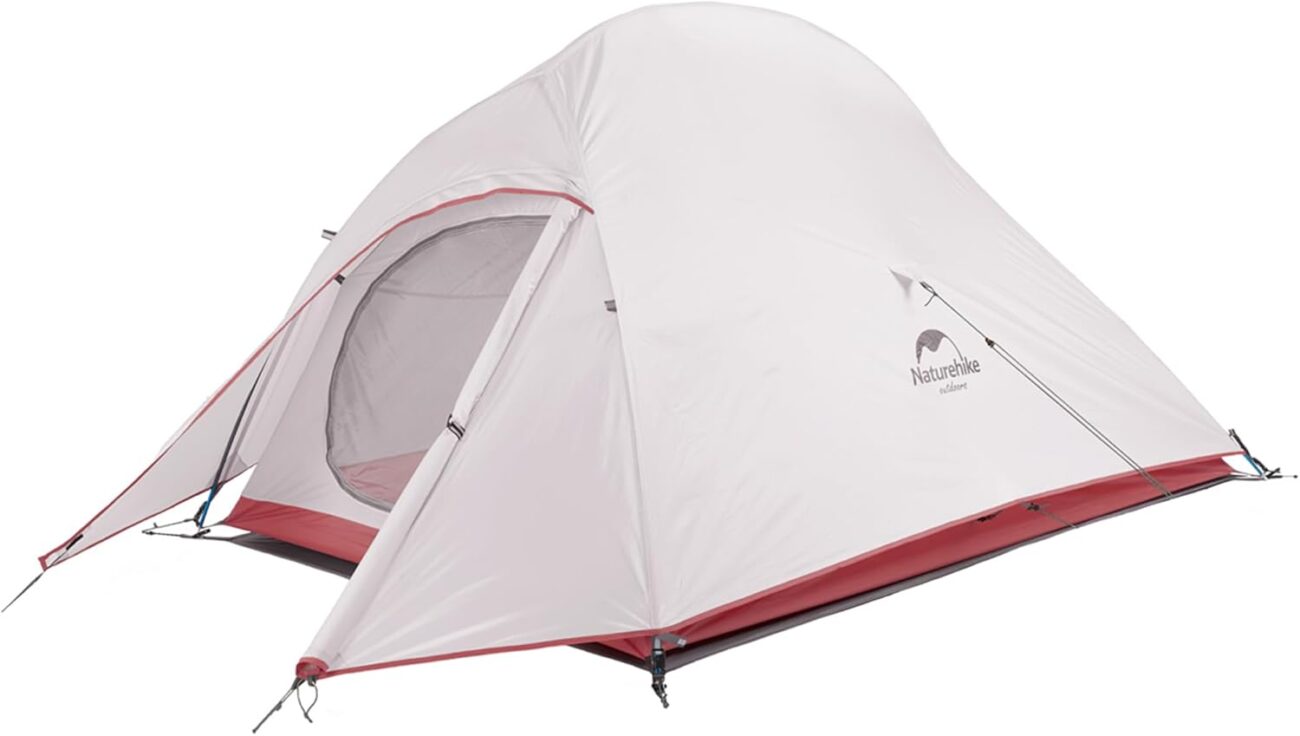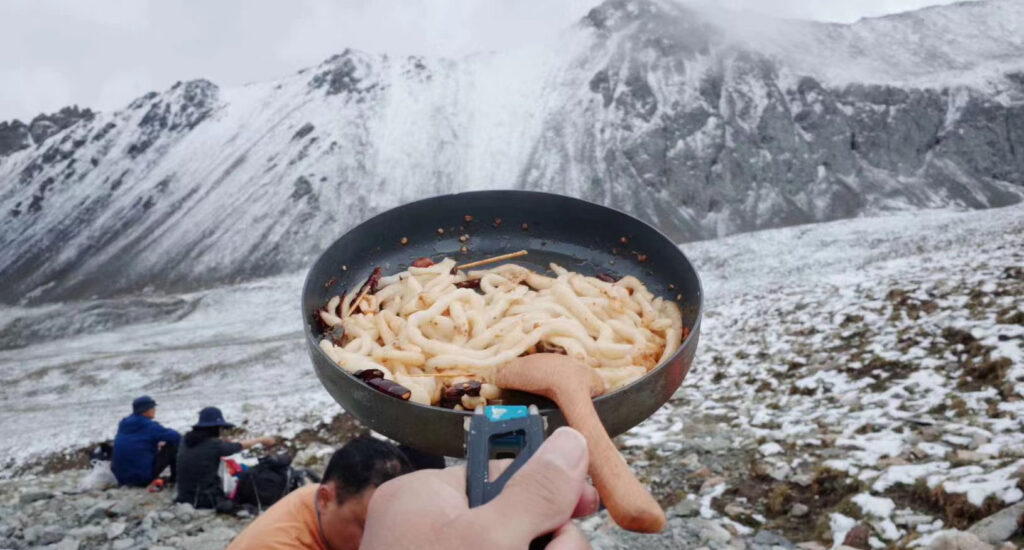About Author: Yu Liu – 3FULGEAR Brand and Design Manager
I can’t go hiking in the mountains this year due to personal reasons, but I still want to write some practical knowledge and hopefully give some help to hikers who are planning an adventure.
I am a very picky eater, and I don’t want to repeat myself every day in the mountains, so I like to use basic ingredients to cook. I was often asked by other people in the mountains if I came from a “chef school”, and thus earned the trail name of “big chef”.
That’s exactly why I’ve had a lot of people ask me how to prepare food in the mountains, but it’s hard for me to answer specifically, eating and drinking in the mountains is a systematic project and varies from person to person, and my personal list of food isn’t necessarily suitable for everyone, so I’d like to write about something that is generalized.
Be forewarned, this article is dry and hard and as boring as reading a toolkit, but I promise it will be well worth the read and helpful if you have a trip planned.
We often go to two extremes with food carrying:
1, If you don’t carry an adequate amount of food, you may be faced with trying unpalatable foods because you have no options, or no appetite, you are malnourished and physically exhausted.
2, If you carry too much food, you may be overwhelmed by the pack weight.
These two scenarios happen all the time, and while exprienced mountaineers to be able to do good job, most of us can’t, so we need some sort of “tool” to figure out how much of food we carry is good.
Before introducing this tool, let’s first understand some basics, such as the types of ingredients, which ingredients are suitable for you.
Basic Ingredients, Ready-to-eat Foods, Freeze-dried Foods
Ready-to-eat food is very convenient, but the taste is not necessarily suitable as a main food in a complex outdoor environment. In addition, ready-to-eat food purchased from supermarkets generates a large amount of garbage, which is difficult to be disposed of properly in the field.
Freeze-dried food is a product of modern industrialization, it is very lightweight and nutritionally, but very expensive and has a single taste.
Basic ingredients refer to unprocessed raw materials such as flour, salt, oil, milk powder, etc. These ingredients can be cooked to make delicious meals; they are cheap, lightweight, and ready-to-eat food will be more flavorful and delicious, but cooking a good meal outdoors requires certain outdoor cooking skills.
How much food to prepare?
Different outdoor activities consume different amount of calories; the longer the duration of the same outdoor activity, the higher the amount of calories consumed.
For normal trekking activities, according to the weight of food, prepare 500 grams of food per day for activities under 5 days. 600-700 grams of food per day for 5-11 days. For high intensity adventures, prepare up to 1,000 grams of food per day. The exact amount of food to prepare can be found in the five-step food plan to be described.
Food Planning Tools: 5 Steps to Food Planning
For a novice outdoor traveler on a simple route, outdoor food may not seem to be a problem, but as the level increases and the difficulty of the route increases, how to prepare outdoor food slowly starts to become a tricky problem. In this article I recommend using the “Five Steps to Outdoor Food Planning”, which is quite different from our daily meals, and may be difficult to implement at first, but once mastered, this method will allow you to plan your outdoor meals in a more effective way.
This tool takes into account most people’s preference for team meal preparation and is suitable for small groups of multiple people, just adjust the number of people to 1 when using it solo.
Before doing so, you will need to gather the following information:
| 1.Team mumbers | 2.Length of Trail | 3.Expedition Goal |
| 4.Intense | 5.Weather | 6.Altitude |
| 7.Personal taste | 8.Preferences | 9.Balanced nutrition |
| 10.Budget | 11.Feasibility | 12.Storability |
| 13.Weight | 14.Allergic |
Once all of the above information has been gathered, it’s time to start preparing your food plan.
Step 1: Calculate how much to eat per day
In this step, you need to determine how much to eat per person per day by using five factors: intensity of activity, length of trip, duration of activity, weather, and altitude, which will be referred to as the per person per day amount below.
To determine the amount per person per day you can refer to the table below:
| Activity Type | Food weight per day | energy |
| leisure camping | 500-650g | 2000Kcal |
| Warm environment 2-5 day light hiking | 650-800g | 2500-3000Kcal |
| Cool environment 5-10 day heavy weight hike | 800-900g | 3000-3500Kcal |
| Cool environment 10 day+ heavy weight hike | 900-1000g | 3500-4000Kcal |
| Winter hiking or expedition | 1100g | 4000-4500Kcal |
*The weight of food indicated in this table includes the water of the food itself, which is about 30%, if you bring all-dry food, then 30% of the weight will be deducted from the table.
*The above weights are made based on the consumption of an adult male. Since female have a low basal metabolic consumption, they can reduce the food weight by 100 grams/day.
Step 2: Calculate the total amount
The total weight of food can be calculated using the following formula:
*Total weight = number of people in the team × number of days of activity × food weight per person per day
Step 3: Categorize your food
Knowing the total weight of the food, you now need to categorize the food into more detailed categories such as breakfast, dinner, trail food, etc.
You can refer to the table below:
| Type of food | Per person per day | |||||
| 550g | 700g | 800g | 900g | 1000g | 1100g | |
| Breakfast | 92 | 112 | 128 | 149 | 156 | 152 |
| Dinner | 101 | 126 | 146 | 158 | 165 | 160 |
| Meat | 66 | 89 | 101 | 108 | 169 | 172 |
| Trail food | 123 | 149 | 160 | 167 | 200 | 196 |
| Flour | 40 | 51 | 59 | 72 | 40 | 40 |
| Suger/drink | 44 | 47 | 55 | 63 | 67 | 72 |
| Soup/dessert | 18 | 28 | 41 | 59 | 67 | 76 |
| Milk/egg/oil | 66 | 98 | 110 | 126 | 138 | 132 |
In this table, the flour ratios for the 1000-1100g class (winter camping, heavy-weight trekking for 10 days or more) are only equivalent to the 550g class (recreational camping), which is lowered because flour-based ingredients are very difficult to cook in cold and very difficult conditions.
Step 4: Calculate the weight of each food item
For example, for a team of 6 people on a 4 day early summer mountain hike with moderate daily activity, the weight of flour I need to prepare is:
51g x 6 people x 4 days = 1224g ≈ 1.2kg
Step 5: Choose the type of food
Based on the above results, personal taste, food preference, budget, storage resistance and other information to choose your favorite food, the weight of these foods can be matched according to your taste and habits, the total weight of each type is the same as your calculations on the line. Continuing with the above example, the type/weight of flour you prepare could be:
1.2 kg = 800 g of flour(It can be flour or bread.) + 200 g of muffin mix + 200 g of frying flour.
Finally, you can summarize the various results, make a table and go to the market to purchase according to the table. I strongly recommend that teams planning to cook as a group take time out in advance to make food plans together and divide up the purchases, to some extent you can hone the team ahead of time.
Give examples of each type of food:
Trail food: candy bars, chocolate, energy bars, dried fruit, preserved fruit
Dinner: noodles, rice, potatoes, millet, corn, pancakes
Breakfast: oatmeal, corn mush, instant porridge
Eggs and milk: eggs, milk powder, cocoa powder
Meat: ham, sausage, cheese
Flours: flour, bread, various baking mixes
Sugar/Drinks: powdered drinks, brown sugar, white sugar, glucose
Soup: freeze-dried soup mixes, instant soup mixes, various flavorings and sauces
Addendum: Critical Outdoor Nutrition Knowledge
For a successful adventure, outdoor food nutrition is the key of keys, and at its most fundamental level, it determines whether or not you can survive in a hostile environment. It also determines how quickly your body recovers as you are active for longer periods of time, which means that your body will be able to stay energized for longer periods of time.
Because our physical and mental states can change in dangerous, high-pressure, and hostile environments, we need to carefully and deliberately consider these bodily responses before doing a nutritional program.
For example, you may want to consider the following:
1.Familiarize yourself with the nutritional components, water content, and caloric content of various foods.
2.During an expedition, the frequency of our diet will increase.
3.Outdoor diets will have more protein than everyday life because muscles will grow and repair.
4.In high altitude/high intensity activities/hot environment, appetite and thirst will be reduced, following the appetite to eat will not satisfy the body’s needs.
Energy
Basal metabolic rate (BMR) is the number of calories a person burns per day when they are inactive in a warm environment, BMR varies from person to person, a 70kg 17 year old male has a BMR equal to approximately 1900 kcal while a 60kg 25 year old female has a BMR equal to approximately 1300 kcal.
The number of calories we need for an activity is approximately equal to the exercise exertion plus the BMR. By doing this calculation, we can approximate the number of calories from food needed for a particular activity.
Water
Water makes up about two-thirds of the body’s weight, and although it does not provide calories, it provides the environment necessary for cellular biochemical processes.
In the wild, all water is not driect drinkable and must be treated before drinking, I will described this in the article “Purification of Natural Outdoor Water”. When dehydrated, we experience fatigue, lethargy, irritability, muscle weakness and various gastrointestinal disturbances. Depending on the intensity of the activity and the environment, we need to drink 2-4 liters of water per day. However, it is important to drink the right amount of water. Drinking too much water can lead to hyponatremia, which is similar to the symptoms of dehydration.
Carbohydrates
Carbohydrate is the main source of energy, it can be stored as liver glycogen in the liver after absorption to provide continuous energy for the brain and muscles, but the storage of liver glycogen is limited, so we recommend eating 30-60g of carbohydrates per hour during activities over 90 minutes. In the outdoors, you can eat trail food at each hourly break.
Eating carbohydrates and protein 15-30 minutes after the end of the day’s activity is extremely helpful for recovery, as this is when the body utilizes protein most efficiently, and the carbohydrates taken with the protein protect it from being degraded for energy.
Proteins
Proteins form the basic structure of cells and are the foundation of life. Proteins are made up of amino acids. There are 20 amino acids present in our body, of which 11 can be synthesized in the body and 9 cannot be synthesized on their own but can only be ingested through food; we call these 9 amino acids essential amino acids.
In outdoor activities, we have to estimate how much protein to carry according to different intensity of activities. You can use the following formula to calculate:
Protein requirement (dry weight grams) = body weight (kg) x activity factor
*For hiking, the activity factor is 1.1-1.6
Animal proteins tend to contain all the essential amino acids, but many plant proteins will be deficient in a specific essential amino acid. When there is a single source of protein, certain essential amino acids that are low in content become limiting amino acids, and just as building a house with enough bricks but no cement, limiting amino acids can interfere with protein synthesis. This is why it is important not to have a single source of amino acids in our food.
Fats
Fat can be burn for energy, but it takes a lot of oxygen to burn, and it also needs carbohydrates to provide some energy for its breakdown, so it is only valuable for energy supply during low-intensity activities or after hiking in camp ground. So trail snacks shouldn’t contain too much fat.
Fat is extremely calorie dense, 2-3 times more than carbohydrates and protein. During outdoor activities, foods should have a slightly higher fat content than the daily diet in city because the body needs more calories than usual. If we rely only on carbohydrates, we may face hypoglycemia, a condition in which the brain, in order to maintain normal functioning, urges the body to break down proteins (muscle, bone) and stored fats, and a large amount of degradation of the former can affect our health.
When designing an outdoor diet, we recommend 15-30% of total calories from fat, with no more than 10% of total calories from saturated fatty acids.
Vitamins and minerals
Vitamins and minerals do not make up the structure of cells, but are necessary for cellular biochemical reactions. We recommend that food should be diversified to avoid mineral deficiencies to some extent, and some vitamin tablets and mineral supplements can also be used as dietary supplements for outdoor activities.
To summarize, food preparation is an important project for adventure activities, which determines the quality of your life in the mountains, and a well-fed mood is good, which can indirectly avoid a lot of conflicts in team.
In the new hikers lack of experience, with this introduction to the food preparation method can be scientific and fast food program, the exprienced hikers can also use this method to simplify the preparation process.
I have been using food preparation five-step method for many years, after verification personally feel very simple and practical, so this method will be written out recommended to you, I hope to help you in trail.
Of course, at home in advance to practice good cooking level is crucial, food preparation and then well prepared, made into dark cuisine is also regrettable.
Finally, I wish you will all become a master of outdoor cooking soon.







